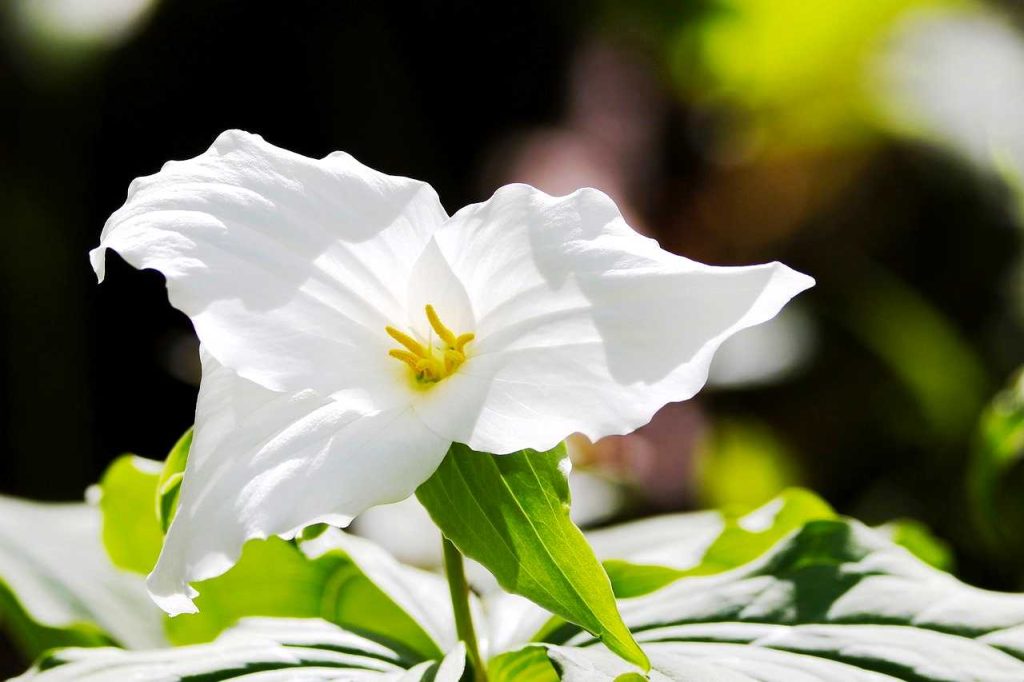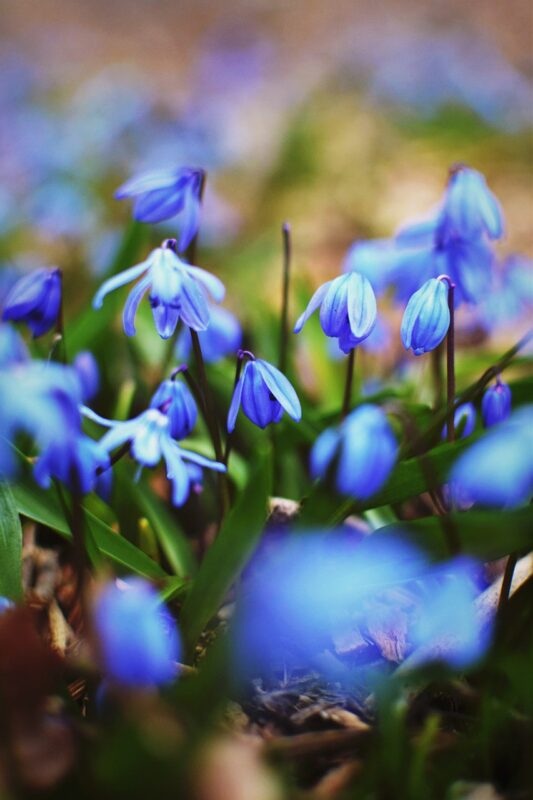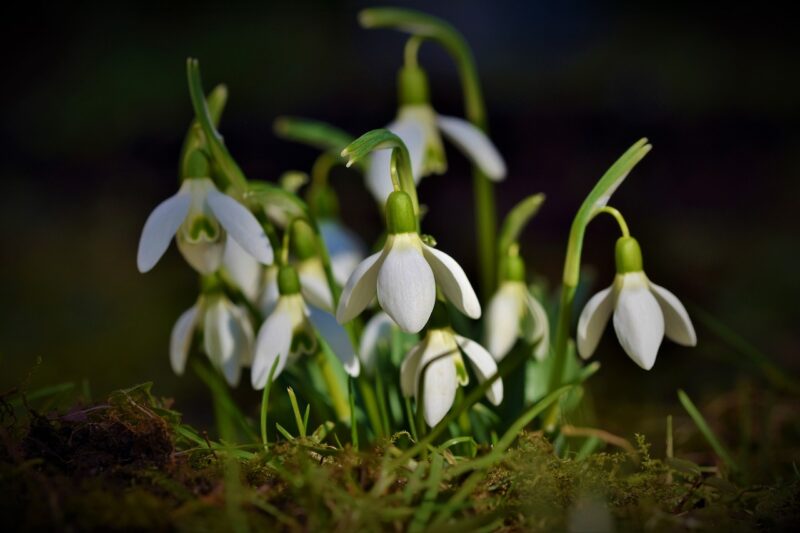In this blog post, we will explore some of the most delightful bulbs for spring flowers.. Each bulb has its unique characteristics and care requirements, making them ideal for creating a stunning spring garden.
Crocus
Crocus bulbs, heralds of spring, are among the first flowers to bloom, often pushing through the still-cool soil while snowflakes may linger. These charming flowers, native to Europe and Asia, come in a variety of colors including purple, yellow, and white, each adorned with vibrant stripes. Crocuses are hardy and can thrive in various soil types, preferring well-drained conditions with full sun to partial shade.
Planting crocus bulbs in clusters creates a stunning visual impact, as their bright petals emerge from the ground. They are also a favorite among pollinators, particularly bees, which emerge early to gather nectar. To cultivate crocuses successfully, plant the bulbs at a depth of about three to four inches, typically in the fall, to ensure a cheerful display when spring arrives.
Daffodil

Daffodils are iconic spring flowers known for their trumpet-shaped blooms and vibrant yellow hues that exude cheerful brightness. These hardy perennials are relatively low-maintenance, making them a favorite among gardeners. Daffodils prefer well-drained soil and thrive in full sun to partial shade.
One of their remarkable traits is their ability to naturalize; when left undisturbed, daffodil bulbs multiply over time, creating stunning displays year after year. A diverse range of daffodil varieties exists, from the classic ‘King Alfred’ to the charming ‘Paperwhite.’ It is best to plant daffodil bulbs in the fall, approximately four to six inches deep, to ensure they sit comfortably in the ground to bloom during the early spring weeks.
Dwarf Iris
Dwarf irises are delightful, compact flowers that offer a splendid display of color and elegance in small gardens or rockeries. Typically blooming in shades of blue, purple, yellow, or white, these petite blooms bring a touch of sophistication to any spring landscape. Dwarf irises have an affinity for well-drained soil and thrive best in sunny locations.
These bulbs should be planted in the fall at a depth of about three inches, allowing for a joyful spring emergence. Their small stature makes them ideal for borders, containers, or interplanting with other spring-flowering bulbs. Moreover, dwarf irises are low-maintenance and can often be left undisturbed for several years, rewarding gardeners with an effortless bloom each spring.
Glory of the Snow

Known scientifically as Chionodoxa forbesii, glory of the snow is a delightful bulb that adds an enchanting touch to gardens. With star-shaped blossoms in various shades of blue, pink, and white, these bulbs often bloom even before the last remnants of winter melt away. Truly, they live up to their name by spreading a carpet of color on snow-dusted ground.
Glory of the snow prefers well-draining soil and should ideally be planted in areas that receive full sun to partial shade. They grow to a height of about six to twelve inches and are ideal for naturalizing, particularly in woodland gardens or under trees where other plants may struggle. Planting these bulbs in the fall at a depth of about three inches will ensure a stunning display when spring arrives.
Grape Hyacinth

Grape hyacinth, or Muscari, are delightful bulbs adorned with clusters of tiny, grape-shaped flowers, often in striking shades of blue, purple, or white. These charming little flowers add a whimsical feel to any garden, carpeting the ground with vibrant color. Grape hyacinths are excellent companions to other early-blooming flowers, filling spaces with splashes of color.
Ideal for well-drained soil and full sun, grape hyacinths are easy to grow and maintain. They can often tolerate less-than-perfect soil conditions, making them a versatile choice for various garden settings. When planting, bulbs should be placed about three inches deep in the fall. These resilient flowers will bloom in early to mid-spring, providing cheerful accents and attracting pollinators.
Lily of the Valley

Lily of the valley (Convallaria majalis) is a timeless favorite known for its delicate, bell-shaped flowers and enchanting fragrance. Although technically a perennial rather than a bulb, they propagate through rhizomes, making them an excellent choice for deeply shaded areas of the garden. Their white blooms create a gorgeous contrast against lush green foliage, adding a touch of elegance to any spring landscape.
These flowers thrive in well-drained, rich soil with plenty of organic material. Planting lily of the valley in spring or fall at a depth of around two inches will set them up for success. Once established, they spread quickly, creating a lovely ground cover that can withstand various conditions. Renowned not only for their beauty but also for their delightful scent, these blooms symbolize purity and humility, making them a cherished addition to any spring garden.
Siberian Squill
Siberian squill (Scilla siberica) is a delightful little bulb known for its charming, star-shaped blue flowers that blanket the ground in early spring. These hardy bulbs are particularly beloved for their ability to naturalize, spreading over time to create beautiful drifts of blue in gardens, forest edges, or under trees. Besides their stunning blooms, Siberian squills are exceptionally low-maintenance, thriving in various soil conditions and even tolerating partial shade.
Plant these bulbs in the fall, around three inches deep, to ensure a robust bloom in early spring when they often emerge alongside the thawing ground. Their striking blue petals contrast beautifully with other spring blooms and are also excellent companions for larger flowers like daffodils and tulips. Beyond their beauty, these flowers are ideal for attracting early pollinators, making them a practical choice for a garden rich in biodiversity.
Tulips

Tulips are undoubtedly one of the most popular and recognizable spring flowers, renowned for their stunning array of colors and majestic shapes. With thousands of varieties available, tulips can suit any garden style, from classic elegance to modern flair. They blossom in various formats, including Darwin hybrids, fringed, parrot, and more, each offering a distinct appearance.
Tulips prefer well-drained soil and a sunny location for full development. Planting tulip bulbs in the fall, at a depth of 6 to 8 inches, ensures a robust root system that will support their impressive blooms come spring. A mixed planting style can create a breathtaking display as different varieties bloom at varying times throughout the season. Their long-lasting flowers also make them popular choices for cut arrangements, allowing you to bring spring indoors.
Snowdrop
The snowdrop (Galanthus nivalis) is a delicate bulb that signals the return of spring, often emerging while snow is still on the ground. Recognizable for its drooping, bell-shaped white flowers, snowdrops are among the first bulbs to bloom, providing a hopeful glimpse of warmer days ahead. Their ethereal beauty is accentuated by their ability to thrive in both sunny and shaded areas, making them ideal for woodland gardens.
Plant snowdrop bulbs in the fall at a depth of about three inches. They can naturalize over time, multiplying and creating lovely colonies that enhance the garden’s aesthetic. Snowdrops also have a unique characteristic: their flowers can withstand freezing conditions, allowing them to bloom even in cool early spring weather. Their graceful presence adds life to the late-winter landscape, making them a cherished harbinger of spring.
Trillium

Trillium is an enchanting perennial bulb that holds a special place in the hearts of wildflower enthusiasts. Known for its distinctive three-petaled flowers, trillium blooms come in various shades, including white, pink, and purple. They thrive in shady, wooded areas and are often found in rich, organic soil, making them perfect for naturalizing in forest gardens.
As a native plant in many parts of North America, trillium is not only visually appealing but also plays an important ecological role, supporting local pollinators. When planting trillium bulbs, care should be taken to place them in their ideal habitat, typically at a depth of around four to six inches in fall. Although they do not bloom until their second or third year, the anticipation is worth it as these elegant flowers transform the forest floor into a breathtaking display of color during spring.
Winter Aconite

Winter aconite (Eranthis hyemalis) is a charming early spring bloomer that brightens up the garden with its cheerful yellow flowers. These hardy bulbs often bloom around the same time as snowdrops, providing a vibrant contrast to the often-muted winter landscape. Winter aconites thrive in well-drained soil and prefer partial shade, making them ideal companions for other early bloomers.
Plant winter aconite bulbs in the fall, about three to four inches deep, and enjoy the spectacle of their sunny blooms emerging from the ground as winter recedes. Their unique, buttercup-like flowers also produce charming green leaves that resemble a circular crown, enhancing their visual appeal. As they multiply and spread, winter aconites create lovely carpets of yellow in spring gardens, making them a delightful choice for shaded areas.
Bleeding Heart

Bleeding heart (Dicentra spectabilis) is a quintessential perennial known for its heart-shaped blooms that gracefully dangle from arching stems. These enchanting plants are favored for their romantic aesthetic, with flowers typically appearing in shades of pink or white in late spring. The foliage is equally attractive, featuring delicate, fern-like leaves that create an attractive backdrop for the striking blooms.
Bleeding hearts flourish in well-drained soil enriched with organic matter and prefer partial to full shade, making them an ideal choice for woodland gardens or shady corners. When planting bleeding hearts, aim for a depth of five to six inches. They typically grow to about two to three feet tall and can create a lush and inviting atmosphere through their unique shape and color. Their soft, drooping flowers are excellent for attracting hummingbirds, adding life and movement to your garden.
Carolina Jessamine

Carolina jessamine (Gelsemium sempervirens) is a climbing vine that brings a splash of bright yellow to spring gardens. Known for its fragrant, trumpet-shaped flowers, this perennial vine is not only stunning but also serves as an important nectar source for pollinators like bees and butterflies. The green, glossy foliage provides an attractive contrast to the vibrant blooms, adding to its overall appeal.
This versatile vine does well in a variety of soil types, but it thrives in well-drained conditions with full sun. Carolina jessamine can be used to cover fences, trellises, and arbors, creating a beautiful display that draws attention. When planting, dig a hole deep enough to accommodate the root ball, usually at a depth of about four to six inches. With proper care, Carolina jessamine can grow up to 20 feet long, providing lovely color and fragrance throughout the spring months.
Columbine
Columbine (Aquilegia) is another delightful perennial that adds whimsy and charm to spring gardens. Known for its distinctive, spurred flowers that come in various colors—ranging from blue and purple to yellow and red—columbine creates a captivating visual display. The delicate flowers, often attracting hummingbirds, bloom in mid-to-late spring, making them a wonderful addition to any seasonal garden.
Columbines prefer well-drained soil and thrive in partial shade to full sun, making them adaptable to various garden settings. When planting columbine seeds or young plants, aim for a depth of about one inch, as they don’t require deep burial. These plants can grow between one to three feet tall, depending on the variety, and their foliage is equally attractive, resembling small, clover-like leaves. Over time, columbines may self-seed, allowing you to enjoy their beauty with very little maintenance.
Dutchman’s Breeches

Dutchman’s breeches (Dicentra cucullaria) is a charming spring perennial that adds a touch of whimsy to woodland gardens. Characterized by its unique, pantaloon-shaped white flowers that resemble tiny breeches hanging from their stems, this plant is a true showstopper. The flowers appear in early spring, often blooming before most other plants have emerged.
This perennial thrives in rich, well-drained soil and prefers shaded areas, making it perfect for under trees or in partially wooded gardens. Plant Dutchman’s breeches bulbs about four inches deep in fall or early spring. They grow to around one foot tall and also feature deeply dissected leaves that add texture and interest to the garden. Additionally, they are beloved for being an early nectar source for hummingbirds and other pollinators.
Hellebore

Hellebores, also known as Lenten roses, are resilient, early-blooming perennials that offer a beautiful array of colors, including shades of white, pink, purple, and green. Their unique, cup-shaped flowers often bloom even when there’s still snow on the ground, making them one of the first blooms of spring. Hellebores are a favorite among gardeners for their evergreen foliage, which provides year-round interest.
These plants prefer rich, well-drained soil and thrive best in partial to full shade, making them ideal for shaded areas of the garden or under larger trees. When planting hellebores, set them about two inches deep, ensuring the crown is just at soil level. They generally reach a height of 12 to 18 inches and can live for many years, making them a lasting investment in your garden. Their blooms attract early-season pollinators, making them both beautiful and beneficial to the garden ecosystem.
Pigsqueak

Pigsqueak (Bergenia), named for the characteristic sound the leaves make when rubbed, is a perennial that offers a bold presence with its large, leathery leaves and clusters of pink or white flowers. This robust plant blooms in early spring, providing an eye-catching display that contrasts nicely with its deep green foliage. The leaves also take on a rich burgundy hue in the fall, adding seasonal interest year-round.
Pigsqueak thrives in well-drained soil and can tolerate a range of light conditions, from full sun to partial shade. When planting pigsqueak, dig a hole deep enough for the root ball, typically around six inches. These plants can grow to about one to two feet in height, making them an excellent choice for the front or middle of garden beds or as ground cover. Their somewhat drought-tolerant nature once established makes them a great choice for low-maintenance gardens.










